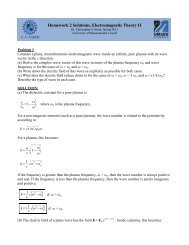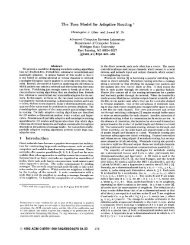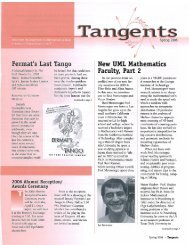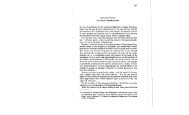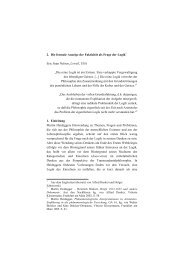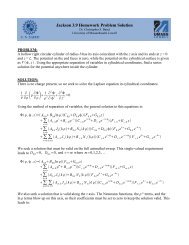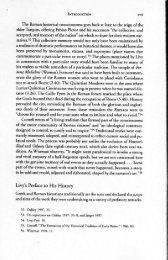CP13.2%20Futrell.%20Seeing%20Red
CP13.2%20Futrell.%20Seeing%20Red
CP13.2%20Futrell.%20Seeing%20Red
Create successful ePaper yourself
Turn your PDF publications into a flip-book with our unique Google optimized e-Paper software.
102 Alison Futrell<br />
down the body of Draba, suspended upside down. In the visual field on<br />
either side of the body, two lines of gladiators walk slowly toward the<br />
stairs leading down to their quarters, stairs that parallel the inverted<br />
body.The movement of the gladiators takes Draba as its focal point; the<br />
gladiators are unified in pace and in the direction of their gaze as they<br />
head toward the axisof the inverted body. The gladiators meet at Draba's<br />
body and join, never again to part.<br />
The actual revolt is instigated by the removal ofVarinia. The slave<br />
girl had caught the eye of Crassus during the deadly combat and was purchased<br />
for his own household. Varinia's departure constitutes the disruption<br />
of Spartacus's primary social bond, and Varinia's loss is exacerbated<br />
by the more stringent controls on the gladiators introduced after<br />
the death of Draba. A renewed suppression of communication further<br />
tears at the building blocks of the fledgling gladiatorial community. In<br />
contrast to the Fast novel in which a speaking Spartacus signals revolt,<br />
forced silence is the film's catalyst for the outbreak, as silent gladiators<br />
slaughter their oppressive keepers and take over the school. The primacy<br />
of the community is reiterated in the scene showing Spartacus's return<br />
to the iudus after the outbreak. He returns to the locations of greatest significance,<br />
visually relives the moment of unity in the barracks, retracing<br />
the coalescence of gladiators around and through Draba, then he returns<br />
to his own cell, where he first bonded with Varinia: , the soundtrack's love<br />
theme plays to clarify the connection for the viewer.<br />
Into his quiet reverie intrude the howls of the as-yet lawless gladiators,<br />
and Spartacus responds by organizing the rebels into a movement.<br />
S~artacus condemns the current efforts of the rebels to simply invert the<br />
hierarchy of power yet leave the system itself fundamentally intact. He<br />
asks them, "What are we becoming? Romans? Have we learned nothing?"<br />
Calling ,upon the symbol of Draba as a unifying icon, Spartacus<br />
urges the gladIators to hunt bread instead of wine to seek the staff of life<br />
instead of the lassitude of drunkenness. This is one of the few verbal expres~ions<br />
of the gladiator's ideology. Here, as elsewhere, its simplicity<br />
and Its lack of an explicitstatement of goals and values make this a "code"<br />
rather ~a~ a ~octrine, a code that emphasizes the brotherhood of the<br />
rebe~ I~ ~n;pIicit~ontrast to the Roman hierarchy. 56<br />
anrua s role in the community makes clear that this is a "brotherhood"<br />
that male relationships are prioritized by the rebels' as in the Fast<br />
novel Varinia does n t " . th 's<br />
' 0 partICIpateIII e revolt on the same level as partacus<br />
and the gladiators. She fights no battles, nor does she plan attacks<br />
or even arrange for s li In d .,<br />
upp res, stea we see her engaged m the actlons<br />
Figure 3.3 Varinia's jug from the title sequence of Spartacus.<br />
Seeing Red 103<br />
of a wife and mother. She is a tool of sociopolitical development, a receptaclefor<br />
another's action: this role is emphasized by the repeated presenceof<br />
her attribute, the jar, which appears in the title sequence, in her<br />
arms,and even in her environment: in one scene she stands in a field of<br />
buriedpithoi (fig. 3.3). Varinia is a container of meaning but isolated from<br />
the ideological process; her location outside the political contest continues<br />
throughout the film.>? She is a home-front supporter of the rebellion,providing<br />
food and comfort, even though the film develops her<br />
characteras lucid, articulate, literate, more innately intelligent than Spartacusand<br />
thus as capable of political perception. Her rebellion is conductedalong<br />
gendered lines and is peripheral to the battlefield strugg~e<br />
on which the film focuses. Varinia's resistance to Rome is couched (Ill<br />
allsensesof the term) as an issue of love-love as loyalty to a man and,<br />
indirectly,to what he may represent ideologically.<br />
This is clarified in the reunion scene between Varinia and Spartacus<br />
~hoi:t1yafter the rebellion gets underway. The importance of this sC,ene<br />
IS emphasized by its highly formalized structure: three sets ~f ~h~lcerepeatedstatements<br />
begin with an assertion of the rights of the IlldIVl~u~1<br />
toself-determination, as, in a laughing sing-song, Spartacus and Vanma<br />
taketurns reassuring each other that never again can anyone sell them,<br />
Orgivethem away, or make them stay with anybody. The chanting pattern<br />
is broken by Varinia, who giggles, "Oh, I love you Sparta~us." Her<br />
~ood shifts abruptly to seriousness as she repeats her assertion three<br />
tImes.Spartacus answers her avowal with "I still can't believe it," an ambiguousdeclaration<br />
that commands further commitment on her part.<br />
She,obliges, lindercutting her previous statements of independence by<br />
u,rgmgSpartacus, "Forbid me ever to leave you." Spartacus becomes seflOUSand<br />
formally assertive; he leans forward and grasps her shoulders



